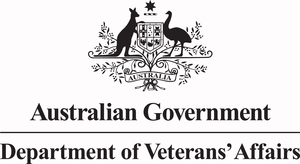What are aged care asset tests?
Your parent needs aged care, and you’re faced with government forms and assessment processes that can feel unnecessarily complex. The aged care asset tests will determine how much they pay, which could be potentially tens of thousands of dollars difference depending on how you handle it.
The challenge is that assets are treated differently throughout the system. Some count fully while others get caps or exemptions, and the timing of financial decisions can dramatically affect costs. Get it wrong and you could be paying far more than necessary.
Here’s what you need to know to navigate the system confidently and protect your family’s financial position.
Understanding how the aged care asset tests works
The aged care asset tests are part of the government’s means assessment process, designed to determine how much financial support you’ll receive and what fees you’ll pay. Think of it as a comprehensive financial health check that examines both income and assets to calculate your contribution to care costs.
For residential aged care, both income and assets are evaluated together in what’s called a “means assessment.” This assessment determines two critical things: whether you’ll pay a means-tested care fee (up to around $33,000 annually) and how much government support you’ll receive for accommodation costs.
The assessment looks at your total financial picture, including bank accounts, investments, property, and superannuation. But here’s where it gets interesting – not all assets are treated equally, and understanding these differences is crucial for strategic planning.
Services Australia handles most assessments, though if your parent receives Department of Veterans’ Affairs (DVA) benefits, DVA will conduct the assessment. The good news is you can request an assessment before moving into care, giving you time to understand the implications and potentially restructure finances if beneficial.

What assets are actually assessed
The asset tests cast a wide net, but knowing exactly what’s included helps you understand your exposure and identify planning needs. Financial assets form the largest category and include obvious items like bank accounts, term deposits, shares, and managed investments. They also include less obvious assets like gold bullion, loans you’ve made to others, and even cash stored at home.
Investment properties are fully assessed at market value, including any rental income they generate. Superannuation balances count as assets, which can be significant for medical professionals with substantial super funds. Family trusts and private companies are also assessed, often at the underlying asset values rather than any nominal shareholding amounts.
However, some assets receive special treatment. Your family home gets capped treatment – only up to $206,663 (as of July 2025) is counted, regardless of actual value. If the home is worth less than this cap, the actual value is used. For couples, each partner is considered to own half, so the cap applies to each half separately.
Household contents and personal effects are typically valued at just $10,000, regardless of their actual worth. Cars, boats, and caravans aren’t assessed at all. Neither are antiques, collections, or standard life insurance policies.


The family home: your biggest asset protection opportunity
For most families, the family home represents the largest asset and the biggest opportunity for strategic planning. The way the home is treated in the asset tests can significantly impact aged care costs, making it crucial to understand your options.
If your parent keeps the family home while in residential care, only the capped amount ($206,663 for 2025) counts towards the asset tests. For a home worth $800,000, this means $593,337 is effectively protected from the assessment. This can reduce aged care fees substantially compared to selling the property and holding the proceeds as financial assets.

The home receives even better treatment if it’s occupied by a protected person. These include your parent’s spouse, dependent children, or certain carers and relatives who meet specific criteria. When a protected person lives in the home, it’s completely excluded from the asset tests – a significant benefit that can save tens of thousands annually in aged care costs.
But keeping the home isn’t always the right strategy. Maintenance costs, insurance, and rates continue regardless of whether anyone lives there. For some families, selling and using the proceeds strategically makes more financial sense, particularly if the sale proceeds can fund other financial planning strategies.
The key is understanding these rules before making irreversible decisions. Once you sell the family home, you can’t get the capped treatment back. But if you understand the system, you can time decisions to optimise both care costs and overall family wealth.
Income vs assets: how both affect your costs
While this article focuses on the asset tests, aged care costs are actually determined by both income and assets working together. Understanding this relationship helps you see the full financial picture and make better strategic decisions.
Income assessment uses deemed rates rather than actual investment returns. This means the government assumes your financial assets earn a set return (as at July 2025 around 2.25% for balances under $58,800 and 4% above that), regardless of their actual earnings. If your investments perform better than the deemed rate, you keep the extra. If they perform worse, you’re still assessed as if they earned the deemed amount.

Assets that don’t generate assessable income (like the family home under the cap, or personal assets like cars and boats) can be more tax-effective than high-performing investments that exceed the deemed rates.
The means-tested care fee combines both income and asset assessments, with the total capped at around $33,000 annually. But accommodation costs work differently and these are based primarily on your asset position and can be much more significant, potentially reaching hundreds of thousands for premium facilities.
Gifting rules and five-year look-back
One common question from families is whether gifting assets can reduce aged care costs. The answer is nuanced and requires understanding both the rules and potential consequences.
The asset tests include a gifting rule that looks back over five years. Gifts above $10,000 in any financial year, or $30,000 over five years, are still counted as assets for aged care purposes. This prevents families from simply giving away assets immediately before entering care.

But strategic gifting can still be beneficial if you have time to plan ahead. Gifts made more than five years before entering care aren’t assessed. For families who can plan well in advance, this can be an effective strategy, particularly when combined with other wealth protection approaches.
However, gifting isn’t just about aged care costs. It can affect Centrelink entitlements, create tax implications, and reduce your financial flexibility. For medical professionals with complex financial arrangements, any gifting strategy needs to consider these broader implications and align with overall estate planning goals.
Couples and shared assets
If either parent is married or in a de facto relationship – whether that’s to each other or a new partner – the asset tests rules become more complex but also create additional planning requirements. The government considers married and de facto couples as a single economic unit, so their combined assets and income are assessed, with each partner attributed half regardless of legal ownership.
This means strategic asset distribution between partners can influence aged care costs. If only one partner needs care, structuring assets to minimise the total means assessment can reduce fees while the other partner remains in the community.
The “couple” definition extends beyond formal marriage to include de facto relationships and even some separated couples if the separation is due to health reasons. Understanding how your parent’s relationship status affects the assessment is crucial for accurate planning.
Common mistakes to avoid
Many families make costly mistakes when navigating the asset tests, often because they don’t understand the rules or make decisions without considering the full implications. One common error is selling the family home too early, losing the benefit of the asset tests cap and converting protected assets into fully assessable ones.
Another mistake is not requesting an assessment early enough. Since assessments are valid for 120 days, getting one before you need it gives you time to understand the implications and potentially restructure finances if beneficial.
Some families also overlook the impact of their decisions on other government benefits. Changes that reduce aged care costs might increase income tax or reduce Centrelink entitlements. The key is looking at the total financial impact, not just aged care costs in isolation.
Strategic planning approaches
Effective aged care asset planning requires a strategic approach that considers your family’s complete financial picture. This might involve timing the sale of assets, restructuring ownership arrangements, or using financial products that receive favourable treatment under the asset tests.
For medical professionals with substantial assets, strategies might include maximising the family home exemption, using complying pensions or annuities that receive beneficial treatment, or structuring family trusts to minimise assessable assets while maintaining family control.
The key is starting early. Many effective strategies require time to implement or have waiting periods before benefits apply. Leaving planning until care is immediately needed limits your options and may result in higher costs.
When professional advice makes sense
The aged care asset tests interact with income tax, estate planning, and Centrelink entitlements in complex ways. For busy medical professionals managing substantial assets, professional advice ensures you understand all implications and opportunities.
Aged care financial specialists understand these complex interactions and can model different scenarios to show the total financial impact of various approaches. They can also help navigate the assessment process, ensure you’re claiming all available concessions, and coordinate aged care planning with your broader financial goals.
Given the potential costs involved, aged care can easily cost $50,000-100,000 annually or more. Professional advice often pays for itself through better strategies and avoided mistakes.
Key takeaways
- The aged care asset tests examines all your assets, but some receive more favourable treatment than others
- Your family home is capped at $206,663 (2025 rates) and is completely exempt if occupied by protected persons
- Gifting rules look back five years, but strategic gifting can still be beneficial with advance planning
- Couples are assessed on combined assets, creating opportunities for strategic asset distribution
- Understanding the interaction between income and asset assessments helps optimise total costs
- Early planning provides more options and better outcomes than last-minute decisions
Moving forward
Navigating the aged care asset tests doesn’t have to be overwhelming. With the right understanding and strategic approach, you can ensure your loved one receives quality care while protecting your family’s financial position.
The complexity of the system means that what works for one family may not suit another. Professional aged care financial planning helps ensure your approach is tailored to your specific circumstances and integrated with your broader financial goals.
If you’re ready to understand how the aged care asset tests apply to your family’s situation and explore strategies to optimise your outcomes, consider speaking with a specialist aged care financial planner who understands the unique needs of medical professionals.
This article contains general advice only and may not be suitable for your circumstances. Make sure you seek financial advice appropriate to your individual circumstances before making decisions.



